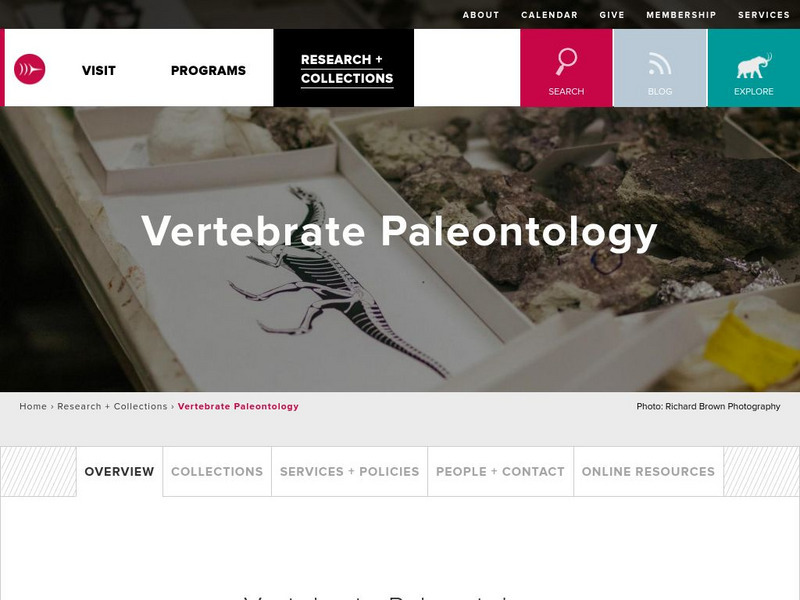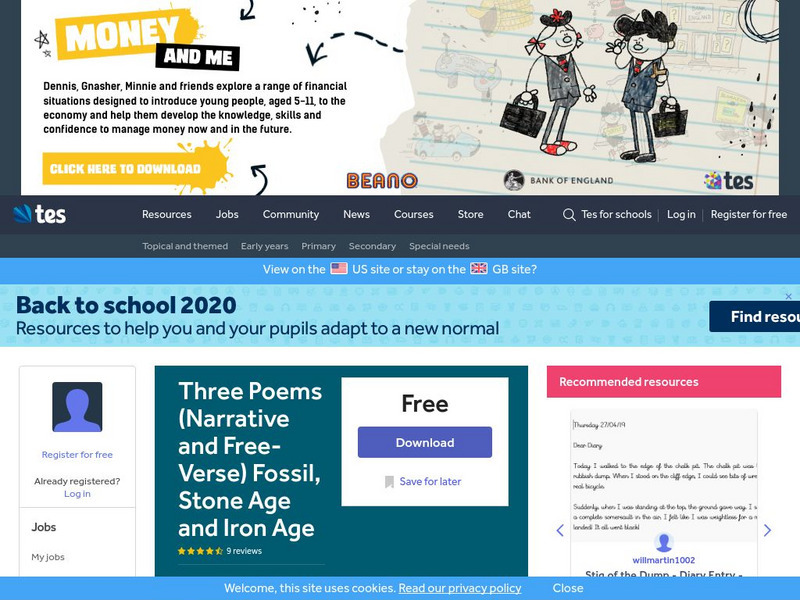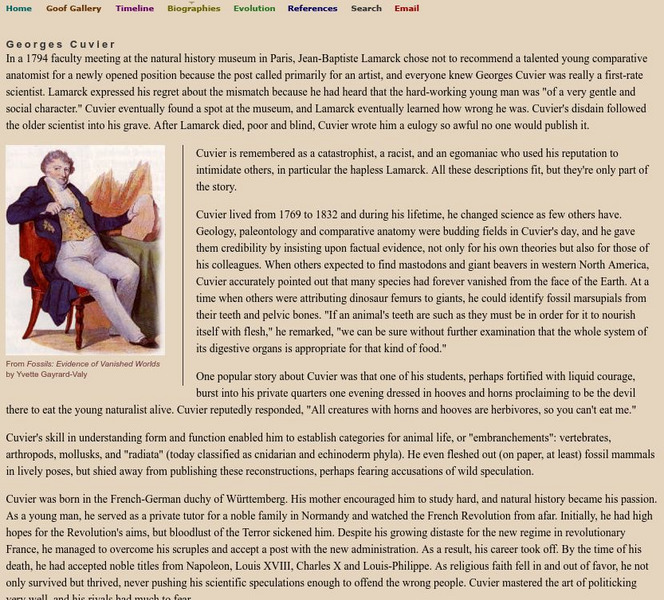Hi, what do you want to do?
US Geological Survey
Usgs: Fossils and Rocks
Part of an online publication offered by the U.S. Geological Survey, this articles sheds light on how studying fossils became an important part of understanding geologic time.
University of California
University of California Museum of Paleontology: Fossil Evidence
Understanding Evolution provides evidence for evolution using fossils. There are also links to lesson plans.
Other
Young Geologist
Pick from among twelve fossils to learn more about what kind of animal they were and how long ago they lived.
Burke Museum
Burke Museum: Paleontology Collection
In addition to further information on the study of Paleontology, this Museum collection site references over 2.75 million specimens of study available. A search key is provided along with detailed information.
Burke Museum
Burke Museum: Marine Fossils
"Marine fossils and their living relatives" is part of a larger site dedicated to the research and collection information of the Burke Museum on Paleontology.
Scholastic
Scholastic: Study Jams! Science: Landforms, Rocks & Minerals: Sedimentary
A slideshow, a karaoke song to sing along to, and a short multiple-choice quiz on sedimentary rocks and how they are formed.
Massachusetts Institute of Technology
Mit: Inventor of the Week: Willard Libby Carbon Dating
Use this site to learn about radiocarbon dating and the scientist who discovered it, Willard Libby (1908-1980 CE).
University of California
University of California Museum of Paleontology: Geologic Time
Learn about geologic time, including the age of the Earth by putting it in terms of pages in a book.
Sophia Learning
Sophia: Fossils: Lesson 3
This lesson will explain how fossils can be used to determine evolutionary relationships. It is 3 of 6 in the series titled "Fossils."
National Association of Geoscience Teachers
Nagt: Illinois Caverns Field Trip
Take your students on a caving experience. This field trip gives hands-on experiences with stalactites, flow stone, fossils, water erosion, limestone, and groundwater.
Georgia Department of Education
Ga Virtual Learning: Geologic Time and Correlation
In this amazing interactive tutorial you will learn about what methods are used by geologists to learn about the history of the Earth. Investigate a geologic time scale and learn about how scientists have developed and organized a record...
Georgia Department of Education
Ga Virtual Learning: Historical Geology
In this interactive tutorial you will explore how geologists use clues in rocks to determine the order in which rocks formed. Learn how principles of radioactivity are used to assign actual ages to rocks. Students will explore fossils...
PBS
Idaho Ptv: Dialogue for Kids: Fossils
A collection of fossil facts and links. Includes a reading list, a glossary, and links to teacher resources. While there are links to videos, they may no longer work.
Burke Museum
Burke Museum: Paleontology
This collection of artifacts and information on Paleontology from the Burke Museum includes online exhibits and access to pictures from various collections.
American Geosciences Institute
American Geosciences Institute: Earth Science Week: Mud Fossils
In this lesson learners will look at the major divisions of geologic time and learn about the fossils and forms of life which existed during those periods, helping them to understand how the age of rocks are preserved.
TES Global
Tes: Three Poems (Narrative and Free Verse) Fossil, Stone Age and Iron Age
[Free Registration/Login Required] These narrative and free verse poems describe fossils, the Stone Age, and Iron Age. Entertaining graphic features accompany the poems.
TeachEngineering
Teach Engineering: Fantastic Fossils
Students learn about fossils - what they are, how they are formed, and why scientists and engineers care about them.
American Museum of Natural History
American Museum of Natural History: Dinosaurs: Ancient Fossils, New Discoveries
Visitors to this resource will discover the new things that scientists are learning about dinosaurs by paging through the information about this comprehensive exhibition.
American Museum of Natural History
American Museum of Natural History: Brachiopods O Logy Card
Flip this interactive card to start learning about Brachiopods. Answer multiple-choice and fact-or-fiction questions and review some fast facts about this shelled animal that's been around for over 500 million years.
American Museum of Natural History
American Museum of Natural History: Gobi Expeditions O Logy Card
Flip this interactive card to start learning about Gobi Expeditions. Answer multiple-choice and fact-or-fiction questions and review some fast facts about this expedition where paleontologists and scientists gather to collect Cretaceous...
Other
Strange Science/george Cuvier
A brief description of George Cuvier and his ideas concerning comparative anatomy, fossils, evolution of life, and the idea of extinction.
Read Works
Read Works: Big Bird Found
[Free Registration/Login Required] An informational text about the fossil of the largest terror bird ever found. A question sheet is available to help students build skills in reading comprehension.
Read Works
Read Works: Fossils & Dinosaurs Fossils
[Free Registration/Login Required] This text describes a field trip to Central Park. Information is shared about fossils and the work of archaeologists. This passage is a stand-alone curricular piece that reinforces essential reading...
Read Works
Read Works: Dig This!
[Free Registration/Login Required] Students read different fossils, how fossils are made, and three different types of rock on Earth. A question sheet is available to help students build skills in comparing and contrasting.



























